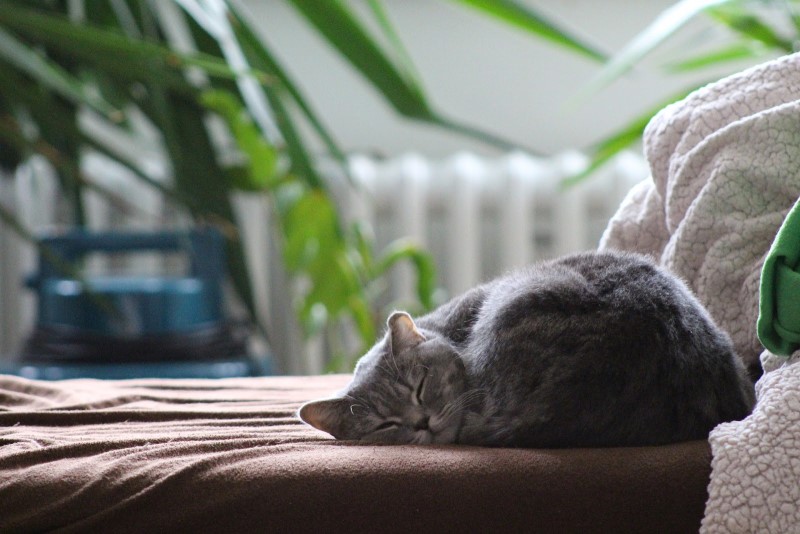2021/07/29 14:10:02
How to Keep Cats from Scratching Furniture with Vinegar

Source: https://pixabay.com/
Cats are beautiful pets, they are clean, and they mostly mind their business by sleeping all day, especially on couches. Save for one pesky feature that they have, their claws. Cat claws are among the sharpest of any domesticated animals, and since they spend a lot of time indoors, they can wreak havoc of untold proportions, especially if you have sensitive furniture.
But there’s good news; you can use vinegar to stop them from doing this. We are going to explore how vinegar can be used to stop your cat from leaving ugly scratches on your stylish couch permanently. So stick around if you have been having this problem.
Why Vinegar

Source: https://pixabay.com/
Vinegar has a very strong smell, and cats have a very strong sense of smell. When you combine these two, then you have one of the most effective repellents that are not only natural but will have no effects on your furniture in any way. A cat’s sense of smell is ten times stronger than a human’s, and this should paint a clear picture of how effective this method is. Cats will balk away from the smell of vinegar, even when it has dried out for days.
How to Repel Cats With Vinegar

Source: https://pixabay.com/
To stop your cat from scratching your new furniture all the time and making it ugly every time they are sitting on it, try the following quick tips that have been used over the years with great success.
Ingredients
● Apple Cider Vinegar
● Citrus
● Water
The Process

Source: https://pixabay.com/
Don’t attempt to use apple cider vinegar in its natural state as it is usually too concentrated and that could open up a new problem by attracting sugar ants, and that is the last thing you want to deal with.
Mix the 1 part water with 1 part apple cider vinegar in a spray bottle and shake them nicely until they are mixed uniformly. A few shakes should do the trick, but you can continue for as long as you want; there will not be much of a difference.
Once all that is ready, start spraying and spritzing our furniture lightly, especially in the one area your cat loves using all the time. At the same time, you have to be economical with the amount of vinegar so that you don’t overdo it. The following are the main reasons for this.
● Overspraying will end up making the furniture wet, and if the cushions are water absorbent, then you will have a wet seat in the house that’s unusable.
● Overspraying will make the entire house uncomfortable for the cat, and this may force them to find accommodation outside, and that wouldn’t be good.
● Vinegar is a bleaching agent; if you use too much of it, there are some parts of your ouch that are bound to get discolored, which will make the furniture even look worse in the long run.
● You also have to consider the color of your furniture as well as the nature of the upholstery. If you have white furniture, for instance, any significant usage of vinegar will stain it, and continued use will make that permanent.
● You also have to check what you chose to add to the solution. Some people are known to add some herbs like peppermint or lavender to make the house smell better, but this could be poisonous to your cat, and making your cat sick is not the aim here.
Other Solutions

Source: https://pixabay.com/
Sometimes, vinegar may not work as efficiently as you want it to, and that can be a problem. Some cats are simply too stubborn. So what do you do if you find yourself at this crossroad? You can try the following possible solutions.
● Consider trying alternative solutions that will work in the same way as vinegar but which may be too strong. Things like rosemary, eucalyptus, citrus, or rosemary are what you can try, but you have to use them in moderation and on the advice of the vet to avoid poisoning your cat and driving it away.
● If DIY doesn’t work, consider buying anti-scratching spray that is ready-made from your local pet shop. They are much safer as they are made with proper research. The only drawback is that they don’t come cheap.
● Try redirecting your cat’s attention away from the furniture. Cats are generally playful, and in the process, they end up brandishing their claws, which may damage the upholstery. Consider getting a ball or something close to keep the cat busy.
● Try understanding why the cat is behaving like that, as cats usually resort to scratching when they are undergoing something. This doesn’t mean you have to turn into a cat shrink, but a little observation may give you some insight on what’s up with the cat, and then you can take appropriate actions when the time comes.
● Be gentle with cats. Cats are intelligent beings, and they can understand directions. Simply tell them to stop over and over again every time they start scratching, and they will start connecting their actions with your displeasure within no time. Being rough with them is not recommended.
Conclusion
Cats are among the most popular house pets in the world, and indoor accidents are bound to happen, especially where furniture is involved. There are many tactics that you can try if all the above fails, and you can also attend furniture fairs where the chances of meeting companies that specialize in providing better solutions are high. Check out our website for more information on the dates of all the upcoming events.
Looking for the latest furniture designs and the best suppliers?
0/500
All comments
No data.